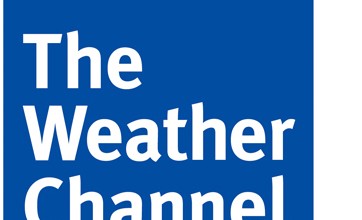Can You Market a Storm? #Nemo and the Weather Channel’s Promotion, Dissected

Chances are you’ve noticed that this winter has come with its own named storms, not unlike the way the National Hurricane Center names storms during the summer. If you live in the northeast or New England, you know there’s a winter storm coming and a lot of people are calling it Nemo. But did you know that naming winter storms is purely an initiative by everyone’s favorite home for live remotes from reporters in harm’s way and light jazz-soundtracked local forecasts, the Weather Channel? It’s true, and it’s pure marketing on their part. You can, in fact, market a storm the same way you can market a new product.
Take a look at the front page of TWC’s website right now. This is the wide image directly above their top stories image slider.
Their web design team really pulled out the stops here: Red is perhaps the most eye-catching color in the rainbow. It also inherently suggests danger, which a lot of people in New England will be in this weekend. There’s pertinent information about expected snowfall and blizzard warnings, yes, but that’s not the first thing most users will notice. Most users will notice the name, manufactured by TWC and already hashtagged to encourage sharing on twitter, and then probably the ad space in the top right corner. Ad space! During a winter storm!
Looking farther up TWC’s homepage, there’s another red bar all the way up top.
Again, more red to catch the eye; huge, simple text with contextually understanding words like “BREAKING NOW” and “Life-Threatening Storm.” Who isn’t going to click on that and unknowingly increase TWC’s pageviews?
Then, the social coup de grace: A share link with dropdown buttons for Facebook and twitter, and another perhaps misleading “SEE FRIENDS AT RISK” link at the right. Clicking said link prompts the user to opt-in for the Weather Channel’s Facebook app (if they haven’t already), meaning the user isn’t so much seeing friends at risk as they are boosting TWC’s social audience without realizing or possibly even caring.
Plenty of people depend on the Weather Channel for up-to-the-minute analysis and forecasts, and rightfully so; they’ve been a staple on basic cable for years. But what many people don’t realize is how truly savvy they’ve become as marketers. With the prevalence of social media, “talking about the weather” is no longer small talk like it used to be, and TWC realize that and use it to their full advantage. They know people are eager to share what’s happening near them and their experiences during a storm. Naming the storm—which started when they coined the term “Superstorm Sandy”—gives the “event” instant identity and “brand” recognition. It’s almost sinister in its coy brilliance.


